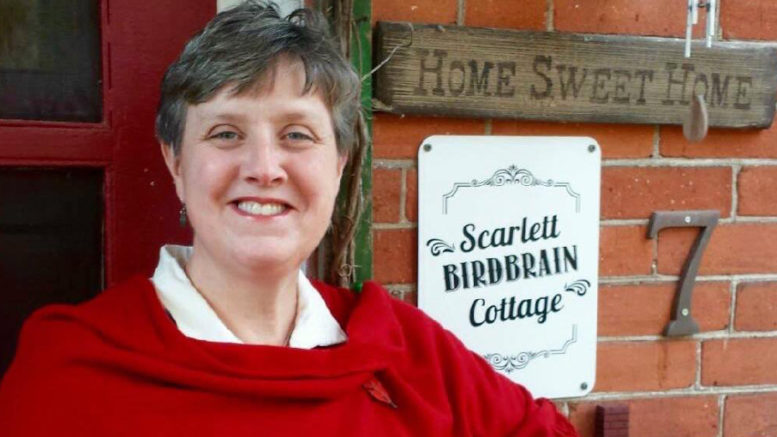Laurie Snider
Notes from the Nest
I pulled up to the field at twilight, just as the sun was setting in the west, painting the sky with brilliant hues of red, orange and purple.
After releasing the hounds, who were happily, prancing around after their bouncy rubber balls, I fixed my gaze towards the east. I’d come to watch the moonrise and as my date was still at work, I arrived instead, with my three canine companions.
Very slowly, the enormous, round, orange face of the “Man in the Moon” began to peek out over the tree line, lighting up the sky joyfully, with a luminous glow. Starring back at me with a mischievous grin, it seemed to say, “Are you looking for me?” The cows in a nearby field joined in on our dusky party, ‘mooing,’ with delight.
Tonight’s full moon is special. It’s the harvest moon. This is the full moon that occurs nearest the autumnal equinox, (which occurred this past Saturday). It usually occurs in September but every few years, October gets a turn. It’s named for the extra light it provides to farmers, bringing in their harvests.
Harvest moons appear to rise in the sky for a few consecutive nights, before and after the official, full moon. This only happens with harvest and hunter moons. The full harvest moon rises at sunset, then near sunset for several nights in a row.
Our brains are responsible, for thinking harvest moons are bigger. This’s because of the “moon illusion.” When the moon is nearer to objects on the horizon, such as buildings and trees, their size and shape provide scale. As the moon rises in the sky, high overhead, it appears to shrink in size, compared to the vast universe it’s melding into.
One of my first memories of the moon, was as a 6 year old, on July 20, 1969, when Neil Armstrong stepped down onto the dusty, pock-marked surface and uttered those eloquent, consequential words, “That’s one small step for man, one giant leap for mankind.” Even as a young child, watching events unfold on our black-and -white TV, in the basement, along with 500 million others worldwide, I was moved and mesmerized.
Our moon, is Earth’s only natural satellite and it took the Apollo astronauts about three days to get there. Twelve men, all Americans, were fortunate enough to have walked on the moon, another six drove on it in lunar rovers. How cool would that have been?
By 1972, the Apollo missions ended and no one has set foot on the moon since. Although last week Elon Musk announced, he’s sending billionaire businessman, Yusaka Maezawa, along with six to eight artists for a trip around the moon, in 2023. If you happen to have a spare million or two bucks, burning a hole in your pocket, perhaps you can book the next flight!
Possibly the next groups of moon explorers to arrive might consider bringing a few industrial strength garbage bags with them. Over the years, past astronauts have managed to leave over 200 tons of trash up there. There is space junk, as well as mementos and even the ashes of a famed planetary geologist, Eugene Shoemaker. There are spent rockets, old satellites, cameras, backpacks and even a couple of golf balls.
The Apollo 11 crew also left a golden olive branch, as a symbol of peace for all mankind. I’m thinking we could probably use that back on Earth these days. The moon is considered to be sacred ground and remains under the “Outer Space Treaty.” It’s free to all nations, to explore for peaceful purposes.
For eons, civilizations around the world have used the phases of the moon, to keep track of time. The moon is on a 29.5-day cycle, roughly the length of our calendar months. Each month’s full moon, has a special name or two, based on location, seasonal folklore or characteristics. Native American tribes kept track of the seasons by naming the full moons. These are terrific and often self-explanatory names like, Snow, Flower, Strawberry, Harvest, Beaver and Cold moon, to name but a few.
The full moon, is often associated with a number of myths and wild tales. Anecdotal stories are often told, especially by doctors, nurses, and emergency workers of increases in patients with severe mental health issues acting up, more babies being born, or more crimes being committed. According to many studies, there isn’t a shred of evidence to back this up.
Then of course there are the werewolves, which everyone knows get especially worked up during full moons. During tonight’s outing, while taking in the wonder and beauty of Earth’s closest celestial body, I certainly didn’t see any werewolves, but when three German shepherds get to howling, they sure can sound like them!

